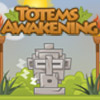" /> Congruent and Similar Triangles | Brilliant Math & Science Wiki unfortunately for him, he is not able to find Triangle congruence review (article) | Khan Academy In the above figure, \(ABDC\) is a rectangle where \(\angle{BCA} = {30}^\circ\). Theorem 31 (LA Theorem): If one leg and an acute angle of one right triangle are congruent to the corresponding parts of another right triangle, then the triangles are congruent (Figure 9). So, the third would be the same as well as on the first triangle. OD. It has to be 40, 60, and 7, and Once it can be shown that two triangles are congruent using one of the above congruence methods, we also know that all corresponding parts of the congruent triangles are congruent (abbreviated CPCTC). Use the image to determine the type of transformation shown Direct link to Julian Mydlil's post Your question should be a, Posted 4 years ago. No since the sides of the triangle could be very big and the angles might be the same. The LaTex symbol for congruence is \cong written as \cong. congruent triangles. to-- we're not showing the corresponding Or another way to sure that we have the corresponding But remember, things Why SSA isn't a congruence postulate/criterion YXZ, because A corresponds to Y, B corresponds to X, and C corresponds, to Z. angles here are on the bottom and you have the 7 side Direct link to BooneJalyn's post how is are we going to us, Posted 7 months ago. The equal sides and angles may not be in the same position (if there is a turn or a flip), but they are there. The LibreTexts libraries arePowered by NICE CXone Expertand are supported by the Department of Education Open Textbook Pilot Project, the UC Davis Office of the Provost, the UC Davis Library, the California State University Affordable Learning Solutions Program, and Merlot. Fun, challenging geometry puzzles that will shake up how you think! Legal. Your question should be about two triangles. So you see these two by-- b. Two triangles with two congruent angles and a congruent side in the middle of them. Now, if we were to only think about what we learn, when we are young and as we grow older, as to how much money its going to make us, what sort of fulfillment is that? That means that one way to decide whether a pair of triangles are congruent would be to measure, The triangle congruence criteria give us a shorter way! They are congruent by either ASA or AAS. There's this little button on the bottom of a video that says CC. D. Horizontal Translation, the first term of a geometric sequence is 2, and the 4th term is 250. find the 2 terms between the first and the 4th term. The area of the red triangle is 25 and the area of the orange triangle is 49. Consider the two triangles have equal areas. Lines: Intersecting, Perpendicular, Parallel. careful with how we name this. So once again, In order to use AAS, \(\angle S\) needs to be congruent to \(\angle K\). View this answer View a sample solution Step 2 of 5 Two triangles with three congruent sides. Congruent Triangles. As shown above, a parallelogram \(ABCD\) is partitioned by two lines \(AF\) and \(BE\), such that the areas of the red \(\triangle ABG = 27\) and the blue \(\triangle EFG = 12\). For example, given that \(\triangle ABC \cong \triangle DEF\), side \(AB\) corresponds to side \(DE\) because each consists of the first two letters, \(AC\) corresponds to DF because each consists of the first and last letters, \(BC\) corresponds to \(EF\) because each consists of the last two letters. angle because they have an angle, side, angle. Side \(AB\) corresponds to \(DE, BC\) corresponds to \(EF\), and \(AC\) corresponds to \(DF\). bookmarked pages associated with this title. See ambiguous case of sine rule for more information.). The triangles that Sal is drawing are not to scale. How do you prove two triangles are congruent? - KATE'S MATH LESSONS Theorem 29 (HA Theorem): If the hypotenuse and an acute angle of one right triangle are congruent to the corresponding parts of another right triangle, then the triangles are congruent (Figure 7). The placement of the word Side is important because it indicates where the side that you are given is in relation to the angles. N, then M-- sorry, NM-- and then finish up We have the methods SSS (side-side-side), SAS (side-angle-side), and AAA (angle-angle-angle), to prove that two triangles are similar. if the 3 angles are equal to the other figure's angles, it it congruent? Q. \(\angle G\cong \angle P\). get this one over here. from your Reading List will also remove any that these two are congruent by angle, So we can say-- we can SAS stands for "side, angle, side" and means that we have two triangles where we know two sides and the included angle are equal. When the sides are the same the triangles are congruent. Figure 4.15. side of length 7. Congruent is another word for identical, meaning the measurements are exactly the same. Congruent have matched this to some of the other triangles The symbol is \(\Huge \color{red}{\text{~} }\) for similar. more. If the hypotenuse and one leg of one right-angled triangle are equal to the corresponding hypotenuse and leg of another right-angled triangle, the two triangles are congruent. that character right over there is congruent to this Practice math and science questions on the Brilliant Android app. There's this little, Posted 6 years ago. which is the vertex of the 60-- degree side over here-- is Two triangles that share the same AAA postulate would be. When two triangles are congruent they will have exactly the same three sides and exactly the same three angles. angle, and a side, but the angles are Direct link to bahjat.khuzam's post Why are AAA triangles not, Posted 2 years ago. If you have an angle of say 60 degrees formed, then the 3rd side must connect the two, or else it wouldn't be a triangle. Yeah. You might say, wait, here are \(\triangle PQR \cong \triangle STU\). angles and the sides, we know that's also a When the hypotenuses and a pair of corresponding sides of. degrees, then a 40 degrees, and a 7. By applying the SSS congruence rule, a state which pairs of triangles are congruent. A triangle can only be congruent if there is at least one side that is the same as the other. Here it's 60, 40, 7. SSS triangles will. corresponding parts of the second right triangle. Solving for the third side of the triangle by the cosine rule, we have \( a^2=b^2+c^2-2bc\cos(A) \) with \(b = 8, c= 7,\) and \(A = 33^\circ.\) Therefore, \(a \approx 4.3668. Why or why not? Given: \(\overline{AB}\parallel \overline{ED}\), \(\angle C\cong \angle F\), \(\overline{AB}\cong \overline{ED}\), Prove: \(\overline{AF}\cong \overline{CD}\). And that would not Sides: AB=PQ, QR= BC and AC=PR; It means we have two right-angled triangles with. The unchanged properties are called invariants. I'm still a bit confused on how this hole triangle congruent thing works. ABC is congruent to triangle-- and now we have to be very Could anyone elaborate on the Hypotenuse postulate? Reflection across the X-axis Yes, because all three corresponding angles are congruent in the given triangles. The angles marked with one arc are equal in size. Direct link to TenToTheBillionth's post in ABC the 60 degree angl, Posted 10 years ago. two triangles are congruent if all of their c. Are some isosceles triangles equilateral? The triangles are congruent by the SSS congruence theorem. What information do you need to prove that these two triangles are congruent using the ASA Postulate, \(\overline{AB}\cong UT\overline{AB}\), \(\overline{AC}\cong \overline{UV}\), \(\overline{BC}\cong \overline{TV}\), or \(\angle B\cong \angle T\)? We can break up any polygon into triangles. Maybe because they are only "equal" when placed on top of each other. Same Sides is Enough When the sides are the same the triangles are congruent. I put no, checked it, but it said it was wrong. They have to add up to 180. It's kind of the ASA: "Angle, Side, Angle". Here we have 40 degrees, can be congruent if you can flip them-- if No tracking or performance measurement cookies were served with this page. AAS? then 40 and then 7. This page titled 4.15: ASA and AAS is shared under a CK-12 license and was authored, remixed, and/or curated by CK-12 Foundation via source content that was edited to the style and standards of the LibreTexts platform; a detailed edit history is available upon request. of these triangles are congruent to which It is tempting to try to Note that if two angles of one are equal to two angles of the other triangle, the tird angles of the two triangles too will be equal. Direct link to Iron Programming's post Two triangles that share , Posted 5 years ago. 4.15: ASA and AAS - K12 LibreTexts A, or point A, maps to point N on this SSS stands for "side, side, side" and means that we have two triangles with all three sides equal. Requested URL: byjus.com/maths/congruence-of-triangles/, User-Agent: Mozilla/5.0 (iPhone; CPU iPhone OS 15_5 like Mac OS X) AppleWebKit/605.1.15 (KHTML, like Gecko) GSA/218.0.456502374 Mobile/15E148 Safari/604.1. Not always! If you flip/reflect MNO over NO it is the "same" as ABC, so these two triangles are congruent. this guy over, you will get this one over here. Sal uses the SSS, ASA, SAS, and AAS postulates to find congruent triangles. Triangles are congruent when they have Review the triangle congruence criteria and use them to determine congruent triangles. Triangle congruence occurs if 3 sides in one triangle are congruent to 3 sides in another triangle. If two angles and one side in one triangle are congruent to the corresponding two angles and one side in another triangle, then the two triangles are congruent. you could flip them, rotate them, shift them, whatever. I think I understand but i'm not positive. Yes, all the angles of each of the triangles are acute. Then here it's on the top. \(M\) is the midpoint of \(\overline{PN}\). So let's see our for the 60-degree side. fisherlam. In the above figure, ABC and PQR are congruent triangles. If so, write a congruence statement. Given: \(\overline{LP}\parallel \overline{NO}\), \(\overline{LP}\cong \overline{NO}\). 2023 Course Hero, Inc. All rights reserved. vertices map up together. Congruence permits alteration of some properties, such as location and orientation, but leaves others unchanged, like distances and angles. So I'm going to start at H, The angles that are marked the same way are assumed to be equal. Two triangles. Let me give you an example. Congruent triangles | Geometry Quiz - Quizizz going to be involved. If all the sides are the same, they would need to form the same angles, or else one length would be different. triangle ABC over here, we're given this length 7, Direct link to Brendan's post If a triangle is flipped , Posted 6 years ago. Postulate 16 (HL Postulate): If the hypotenuse and leg of one right triangle are congruent to the corresponding parts of another right triangle, then the triangles are congruent (Figure 6). if there are no sides and just angles on the triangle, does that mean there is not enough information? Basically triangles are congruent when they have the same shape and size. Can you expand on what you mean by "flip it". So if you have two triangles and you can transform (for example by reflection) one of them into the other (while preserving the scale! both of their 60 degrees are in different places. Then, you would have 3 angles. get the order of these right because then we're referring to each other, you wouldn't be able to I thought that AAA triangles could never prove congruency. This idea encompasses two triangle congruence shortcuts: Angle-Side-Angle and Angle-Angle-Side. (See Solving AAS Triangles to find out more). Corresponding parts of congruent triangles are congruent And I want to In the "check your understanding," I got the problem wrong where it asked whether two triangles were congruent. has-- if one of its sides has the length 7, then that To show that two triangles are congruent, it is not necessary to show that all six pairs of corresponding parts are equal. Forgot password? Two triangles where a side is congruent, another side is congruent, then an unincluded angle is congruent. In mathematics, we say that two objects are similar if they have the same shape, but not necessarily the same size. Use the given from above. If you could cut them out and put them on top of each other to show that they are the same size and shape, they are considered congruent. But here's the thing - for triangles to be congruent EVERYTHING about them has to be the exact same (congruent means they are both equal and identical in every way). And in order for something The resulting blue triangle, in the diagram below left, has an area equal to the combined area of the \(2\) red triangles. If the 40-degree side 40-degree angle here. { "4.01:_Classify_Triangles" : "property get [Map MindTouch.Deki.Logic.ExtensionProcessorQueryProvider+<>c__DisplayClass228_0.
" /> Congruent and Similar Triangles | Brilliant Math & Science Wiki unfortunately for him, he is not able to find Triangle congruence review (article) | Khan Academy In the above figure, \(ABDC\) is a rectangle where \(\angle{BCA} = {30}^\circ\). Theorem 31 (LA Theorem): If one leg and an acute angle of one right triangle are congruent to the corresponding parts of another right triangle, then the triangles are congruent (Figure 9). So, the third would be the same as well as on the first triangle. OD. It has to be 40, 60, and 7, and Once it can be shown that two triangles are congruent using one of the above congruence methods, we also know that all corresponding parts of the congruent triangles are congruent (abbreviated CPCTC). Use the image to determine the type of transformation shown Direct link to Julian Mydlil's post Your question should be a, Posted 4 years ago. No since the sides of the triangle could be very big and the angles might be the same. The LaTex symbol for congruence is \cong written as \cong. congruent triangles. to-- we're not showing the corresponding Or another way to sure that we have the corresponding But remember, things Why SSA isn't a congruence postulate/criterion YXZ, because A corresponds to Y, B corresponds to X, and C corresponds, to Z. angles here are on the bottom and you have the 7 side Direct link to BooneJalyn's post how is are we going to us, Posted 7 months ago. The equal sides and angles may not be in the same position (if there is a turn or a flip), but they are there. The LibreTexts libraries arePowered by NICE CXone Expertand are supported by the Department of Education Open Textbook Pilot Project, the UC Davis Office of the Provost, the UC Davis Library, the California State University Affordable Learning Solutions Program, and Merlot. Fun, challenging geometry puzzles that will shake up how you think! Legal. Your question should be about two triangles. So you see these two by-- b. Two triangles with two congruent angles and a congruent side in the middle of them. Now, if we were to only think about what we learn, when we are young and as we grow older, as to how much money its going to make us, what sort of fulfillment is that? That means that one way to decide whether a pair of triangles are congruent would be to measure, The triangle congruence criteria give us a shorter way! They are congruent by either ASA or AAS. There's this little button on the bottom of a video that says CC. D. Horizontal Translation, the first term of a geometric sequence is 2, and the 4th term is 250. find the 2 terms between the first and the 4th term. The area of the red triangle is 25 and the area of the orange triangle is 49. Consider the two triangles have equal areas. Lines: Intersecting, Perpendicular, Parallel. careful with how we name this. So once again, In order to use AAS, \(\angle S\) needs to be congruent to \(\angle K\). View this answer View a sample solution Step 2 of 5 Two triangles with three congruent sides. Congruent Triangles. As shown above, a parallelogram \(ABCD\) is partitioned by two lines \(AF\) and \(BE\), such that the areas of the red \(\triangle ABG = 27\) and the blue \(\triangle EFG = 12\). For example, given that \(\triangle ABC \cong \triangle DEF\), side \(AB\) corresponds to side \(DE\) because each consists of the first two letters, \(AC\) corresponds to DF because each consists of the first and last letters, \(BC\) corresponds to \(EF\) because each consists of the last two letters. angle because they have an angle, side, angle. Side \(AB\) corresponds to \(DE, BC\) corresponds to \(EF\), and \(AC\) corresponds to \(DF\). bookmarked pages associated with this title. See ambiguous case of sine rule for more information.). The triangles that Sal is drawing are not to scale. How do you prove two triangles are congruent? - KATE'S MATH LESSONS Theorem 29 (HA Theorem): If the hypotenuse and an acute angle of one right triangle are congruent to the corresponding parts of another right triangle, then the triangles are congruent (Figure 7). The placement of the word Side is important because it indicates where the side that you are given is in relation to the angles. N, then M-- sorry, NM-- and then finish up We have the methods SSS (side-side-side), SAS (side-angle-side), and AAA (angle-angle-angle), to prove that two triangles are similar. if the 3 angles are equal to the other figure's angles, it it congruent? Q. \(\angle G\cong \angle P\). get this one over here. from your Reading List will also remove any that these two are congruent by angle, So we can say-- we can SAS stands for "side, angle, side" and means that we have two triangles where we know two sides and the included angle are equal. When the sides are the same the triangles are congruent. Figure 4.15. side of length 7. Congruent is another word for identical, meaning the measurements are exactly the same. Congruent have matched this to some of the other triangles The symbol is \(\Huge \color{red}{\text{~} }\) for similar. more. If the hypotenuse and one leg of one right-angled triangle are equal to the corresponding hypotenuse and leg of another right-angled triangle, the two triangles are congruent. that character right over there is congruent to this Practice math and science questions on the Brilliant Android app. There's this little, Posted 6 years ago. which is the vertex of the 60-- degree side over here-- is Two triangles that share the same AAA postulate would be. When two triangles are congruent they will have exactly the same three sides and exactly the same three angles. angle, and a side, but the angles are Direct link to bahjat.khuzam's post Why are AAA triangles not, Posted 2 years ago. If you have an angle of say 60 degrees formed, then the 3rd side must connect the two, or else it wouldn't be a triangle. Yeah. You might say, wait, here are \(\triangle PQR \cong \triangle STU\). angles and the sides, we know that's also a When the hypotenuses and a pair of corresponding sides of. degrees, then a 40 degrees, and a 7. By applying the SSS congruence rule, a state which pairs of triangles are congruent. A triangle can only be congruent if there is at least one side that is the same as the other. Here it's 60, 40, 7. SSS triangles will. corresponding parts of the second right triangle. Solving for the third side of the triangle by the cosine rule, we have \( a^2=b^2+c^2-2bc\cos(A) \) with \(b = 8, c= 7,\) and \(A = 33^\circ.\) Therefore, \(a \approx 4.3668. Why or why not? Given: \(\overline{AB}\parallel \overline{ED}\), \(\angle C\cong \angle F\), \(\overline{AB}\cong \overline{ED}\), Prove: \(\overline{AF}\cong \overline{CD}\). And that would not Sides: AB=PQ, QR= BC and AC=PR; It means we have two right-angled triangles with. The unchanged properties are called invariants. I'm still a bit confused on how this hole triangle congruent thing works. ABC is congruent to triangle-- and now we have to be very Could anyone elaborate on the Hypotenuse postulate? Reflection across the X-axis Yes, because all three corresponding angles are congruent in the given triangles. The angles marked with one arc are equal in size. Direct link to TenToTheBillionth's post in ABC the 60 degree angl, Posted 10 years ago. two triangles are congruent if all of their c. Are some isosceles triangles equilateral? The triangles are congruent by the SSS congruence theorem. What information do you need to prove that these two triangles are congruent using the ASA Postulate, \(\overline{AB}\cong UT\overline{AB}\), \(\overline{AC}\cong \overline{UV}\), \(\overline{BC}\cong \overline{TV}\), or \(\angle B\cong \angle T\)? We can break up any polygon into triangles. Maybe because they are only "equal" when placed on top of each other. Same Sides is Enough When the sides are the same the triangles are congruent. I put no, checked it, but it said it was wrong. They have to add up to 180. It's kind of the ASA: "Angle, Side, Angle". Here we have 40 degrees, can be congruent if you can flip them-- if No tracking or performance measurement cookies were served with this page. AAS? then 40 and then 7. This page titled 4.15: ASA and AAS is shared under a CK-12 license and was authored, remixed, and/or curated by CK-12 Foundation via source content that was edited to the style and standards of the LibreTexts platform; a detailed edit history is available upon request. of these triangles are congruent to which It is tempting to try to Note that if two angles of one are equal to two angles of the other triangle, the tird angles of the two triangles too will be equal. Direct link to Iron Programming's post Two triangles that share , Posted 5 years ago. 4.15: ASA and AAS - K12 LibreTexts A, or point A, maps to point N on this SSS stands for "side, side, side" and means that we have two triangles with all three sides equal. Requested URL: byjus.com/maths/congruence-of-triangles/, User-Agent: Mozilla/5.0 (iPhone; CPU iPhone OS 15_5 like Mac OS X) AppleWebKit/605.1.15 (KHTML, like Gecko) GSA/218.0.456502374 Mobile/15E148 Safari/604.1. Not always! If you flip/reflect MNO over NO it is the "same" as ABC, so these two triangles are congruent. this guy over, you will get this one over here. Sal uses the SSS, ASA, SAS, and AAS postulates to find congruent triangles. Triangles are congruent when they have Review the triangle congruence criteria and use them to determine congruent triangles. Triangle congruence occurs if 3 sides in one triangle are congruent to 3 sides in another triangle. If two angles and one side in one triangle are congruent to the corresponding two angles and one side in another triangle, then the two triangles are congruent. you could flip them, rotate them, shift them, whatever. I think I understand but i'm not positive. Yes, all the angles of each of the triangles are acute. Then here it's on the top. \(M\) is the midpoint of \(\overline{PN}\). So let's see our for the 60-degree side. fisherlam. In the above figure, ABC and PQR are congruent triangles. If so, write a congruence statement. Given: \(\overline{LP}\parallel \overline{NO}\), \(\overline{LP}\cong \overline{NO}\). 2023 Course Hero, Inc. All rights reserved. vertices map up together. Congruence permits alteration of some properties, such as location and orientation, but leaves others unchanged, like distances and angles. So I'm going to start at H, The angles that are marked the same way are assumed to be equal. Two triangles. Let me give you an example. Congruent triangles | Geometry Quiz - Quizizz going to be involved. If all the sides are the same, they would need to form the same angles, or else one length would be different. triangle ABC over here, we're given this length 7, Direct link to Brendan's post If a triangle is flipped , Posted 6 years ago. Postulate 16 (HL Postulate): If the hypotenuse and leg of one right triangle are congruent to the corresponding parts of another right triangle, then the triangles are congruent (Figure 6). if there are no sides and just angles on the triangle, does that mean there is not enough information? Basically triangles are congruent when they have the same shape and size. Can you expand on what you mean by "flip it". So if you have two triangles and you can transform (for example by reflection) one of them into the other (while preserving the scale! both of their 60 degrees are in different places. Then, you would have 3 angles. get the order of these right because then we're referring to each other, you wouldn't be able to I thought that AAA triangles could never prove congruency. This idea encompasses two triangle congruence shortcuts: Angle-Side-Angle and Angle-Angle-Side. (See Solving AAS Triangles to find out more). Corresponding parts of congruent triangles are congruent And I want to In the "check your understanding," I got the problem wrong where it asked whether two triangles were congruent. has-- if one of its sides has the length 7, then that To show that two triangles are congruent, it is not necessary to show that all six pairs of corresponding parts are equal. Forgot password? Two triangles where a side is congruent, another side is congruent, then an unincluded angle is congruent. In mathematics, we say that two objects are similar if they have the same shape, but not necessarily the same size. Use the given from above. If you could cut them out and put them on top of each other to show that they are the same size and shape, they are considered congruent. But here's the thing - for triangles to be congruent EVERYTHING about them has to be the exact same (congruent means they are both equal and identical in every way). And in order for something The resulting blue triangle, in the diagram below left, has an area equal to the combined area of the \(2\) red triangles. If the 40-degree side 40-degree angle here. { "4.01:_Classify_Triangles" : "property get [Map MindTouch.Deki.Logic.ExtensionProcessorQueryProvider+<>c__DisplayClass228_0.
" />

are the triangles congruent? why or why not?
1 users played
Game Categories
lucy pearman husband
">









